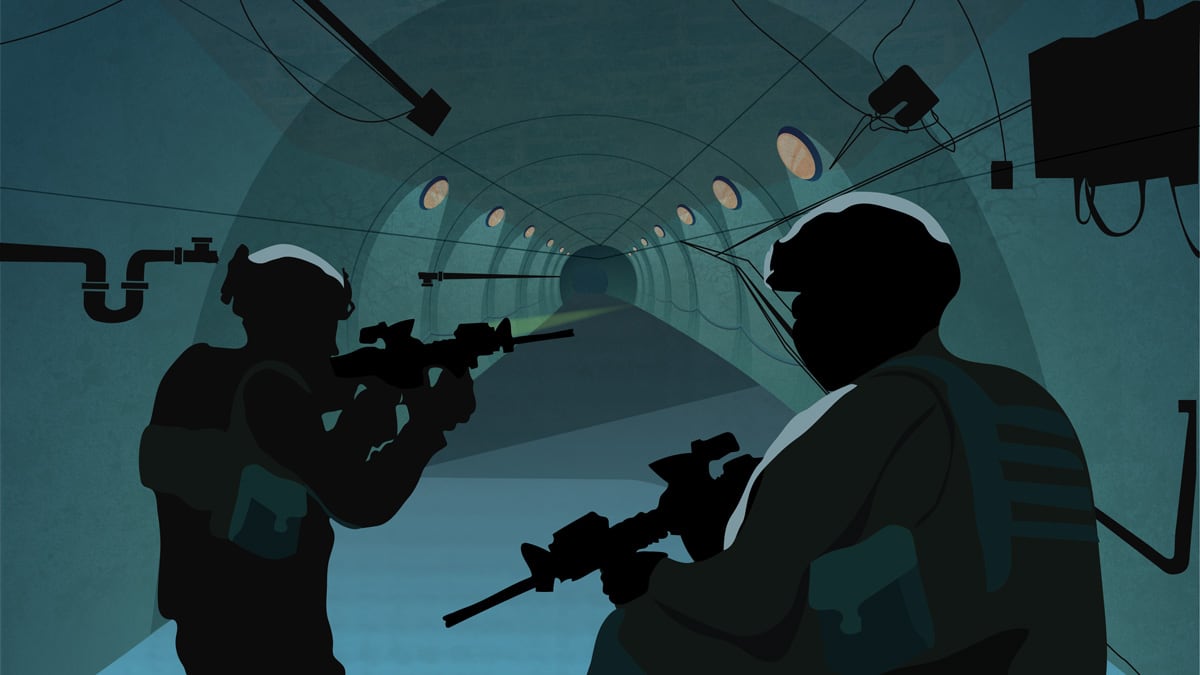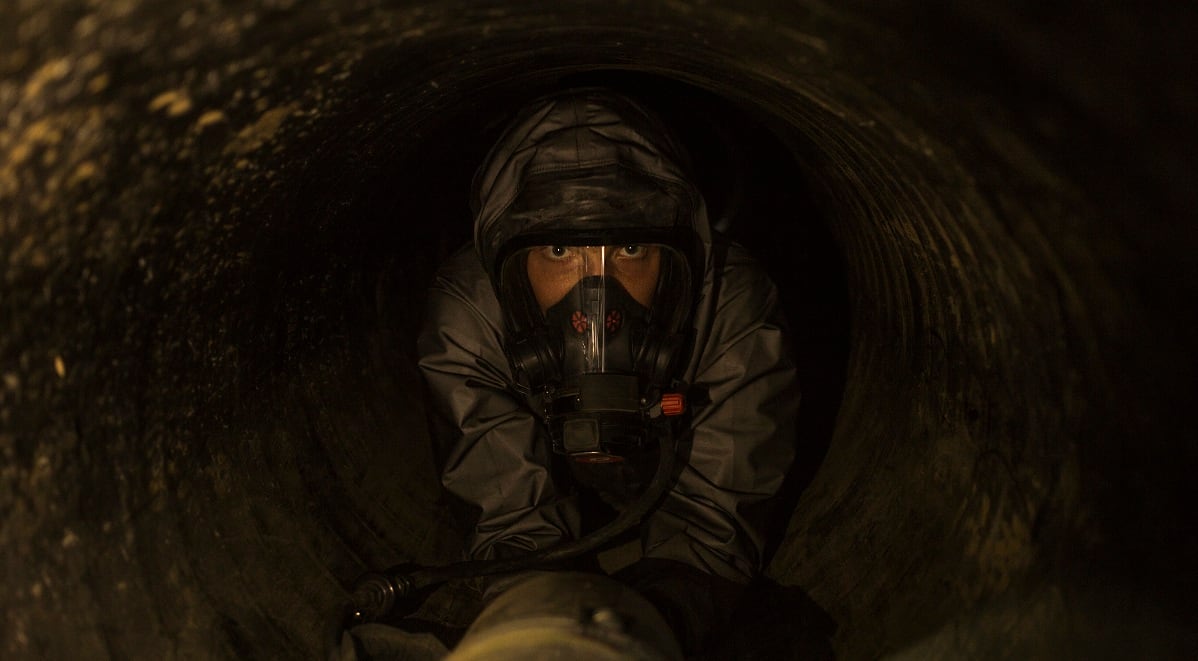Working through tunnel systems can quickly devolve into the primitive, to soldiers and Marines belly-crawling with pistols and flashlights, but a range of updated technology is now used for underground spaces and threats.
Those options span from chemical gas detectors to battery-powered saws to ever-more sophisticated robots to do the dangerous work for troops.
Diesel-powered robot: One robot the Army is looking at is from Brokk, a company that builds robotics for construction, demolition and excavation. It has demonstrated some of its equipment to both the Army’s Rapid Equipping Force and Marine Corps officials, specifically the Brokk 120D, a diesel-powered robot that can operate continuously for eight to 10 hours in confined spaces. It is controllable wirelessly to 1 km.
RELATED

The robot can also navigate stairs, fit on most ground vehicles larger than a Humvee and inside CH-53 ad V-22 helicopters. It offloads itself and can be air dropped, said Tony Marlow, Brook vice president for nuclear and military projects
Recent demonstrations have given the company feedback for modifications that allow for better camera use and radio networking. The Army could make a purchasing decision as soon as mid-year.
The subterranean challenge: A major project that, if successful, could transform situational awareness for troops underground, is the Defense Advance Research Projects Agency Subterranean Challenge. Launched in 2017, it aims for new ways of mapping underground tunnels and meeting the array of challenges with technology by 2021.
Breaching tools: Troops are using throwable robots to investigate what’s down the tunnel or passageway. Those can also be fitted with chemical sensors to detect threats. Those include the First Look 110 and the PackBot 510.
Basic protection: Troops are getting trained with ballistic shields, similar to what law enforcement SWAT teams use when confronting armed suspects.
Communications: This is key underground, and the military has adopted MESH network radios that create a network to retransmit signals through a tunnel via each radio. It allows anyone on the network to talk with anyone else, as opposed to funneling communications through separate networks, like traditional radio systems. They may also use decades-old tech, wired telephone handsets that would not look out of place during the Vietnam War.
Troops have to breathe: A self-contained breathing apparatus for contaminated air may give troops less than 40 minutes of breathing. Special operations versions, with filters to draw surrounding air and clean it, can give them more time.
A kitbag of breaching tools: These can be as high-tech as battery-powered cutting and breaching tools with a variety of attachments to welding-type torches to cut through metal and leverage gates off their hinges. Sledge hammers, pry bars and battering rams are basic tools.
The Army’s Maneuver Center of Excellence has priced equipping a brigade combat team for underground work. That gear list also includes weapons suppressors, containers to transport the equipment and small all-terrain vehicles to move these items on the battlefield.
RELATED

Todd South has written about crime, courts, government and the military for multiple publications since 2004 and was named a 2014 Pulitzer finalist for a co-written project on witness intimidation. Todd is a Marine veteran of the Iraq War.





